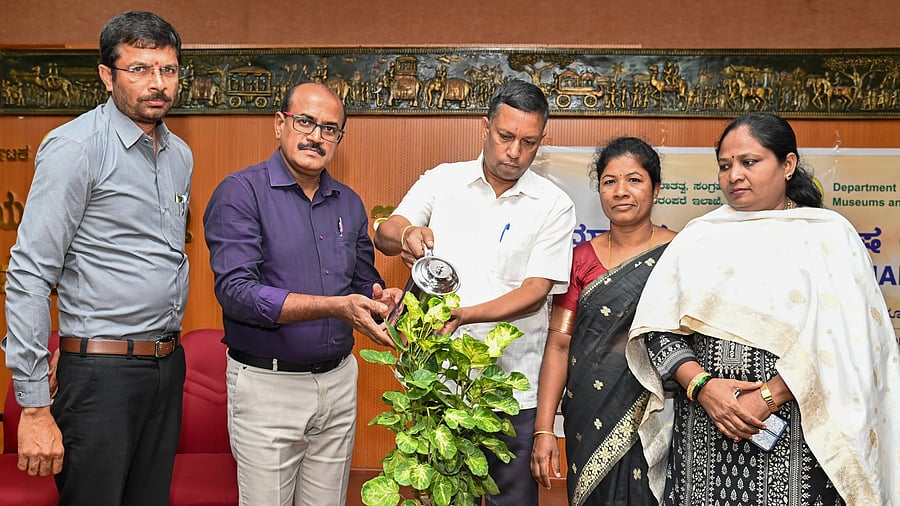
Archaeology, Museums and Heritage department Commissioner A Devaraju inaugurates a talk, as part of the monthly talks series in Mysuru, on Tuesday. Deputy Director C N Manjula and professor Shalva Pille Iyengar were present.
Credit: DH Photo
Mysuru: Professor Shalva Pille Iyengar said, the happiness of the future generations depends on our past or history and thus the study of history assumes significance.
Iyengar, also Chairman of Department of Studies and Research (DoSR) in Ancient History and Archaeology, Karnataka State Open University (KSOU), was delivering a special lecture on ‘Introduction to Buddhist Iconography’, as part of the monthly talks series hosted by the Archaeology, Museums and Heritage department, in Mysuru, on Tuesday.
Evolution of Buddhism
He said, even though Buddha refuted the existence of God, as that theory did not value the actions of humans, Buddhism branched out and evolved over the centuries depicting Buddha himself as god and worshipping him starting from symbols to finally huge idols.
“Besides Buddha, even Bodhisattvas, Yakshas and Yakshinis are also worshipped as symbols and also as idols. However, not many historians know about Buddhist iconography in South India, because Buddhist sites are fewer especially in Karnataka. However, a few sites have been identified like Sannati, Rajagatta, and Lakkundi. More exploration and excavations are necessary, to know more about Buddhism in South India. Thus, the study assumes significance,” Iyengar said.
Light of Asia
“Buddha can be described as the ‘Light of Asia’, as he tried to reform the society, by his teachings. He intended to heal the sufferings of the people. Buddha opposed some practices and beliefs in the Hindu Dharma like the supremacy of god, Vedas and Brahmins and idol worship. But, opposing and reforming did not mean enmity. The evolution of iconography and idol worship in Buddhism has helped to document the birth and growth of Buddhism. The early icons and also the present depiction of idols in Buddhism are based on the symbols of Buddha’s birth, his development and finally parinirvana,” Iyengar said.
He said Buddhist iconography reached its peak during the period of Ashoka and it is documented that 60,000 stupas were built across his empire. “But, most of them and also other structures of various periods have been destroyed over the past few centuries. So, the studies have to be taken up with limited resources,” he said.
Archaeology, Museums and Heritage department Commissioner A Devaraju and Deputy Director C N Manjula were present.